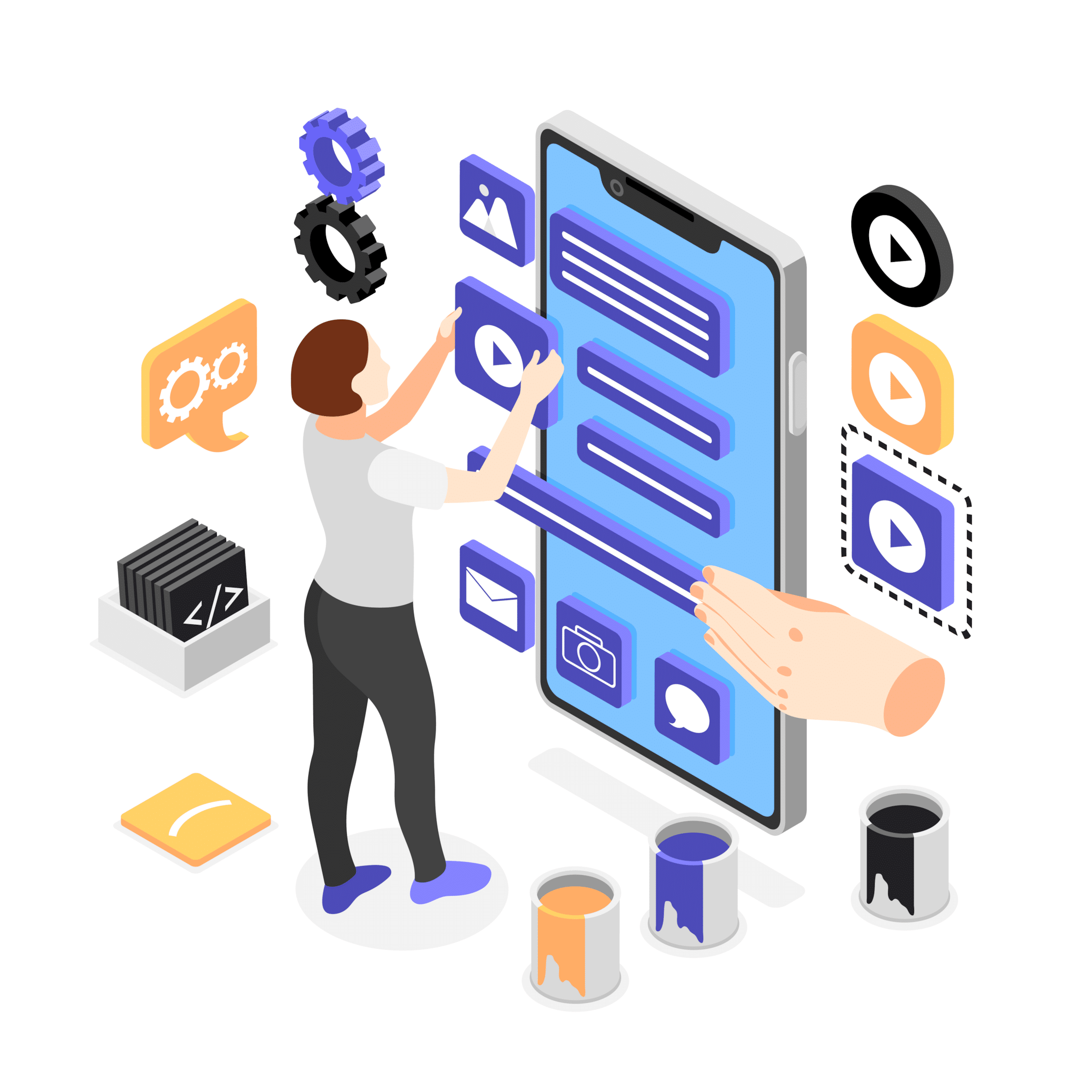The rapid evolution of no-code platforms has revolutionized the way businesses approach app development. In 2024, the market is buzzing with diverse options, presenting both opportunities and challenges. This guide aims to provide an in-depth exploration of essential considerations for businesses looking to select a no-code platform that harmonizes with their unique objectives and growth goals.
What is No-Code?
No-code represents a paradigm shift in software development, empowering individuals without extensive programming expertise to create functional applications. It’s a movement that champions accessibility by eliminating the need for writing intricate lines of code.
At its core, no-code is a visual approach to app development. It provides intuitive, drag-and-drop interfaces, enabling users to construct applications by assembling pre-built components, widgets, or functionalities. This method replaces traditional programming languages with graphical user interfaces (GUIs), enabling users to design, build, and deploy applications through visual means.

No-code platforms offer a diverse range of functionalities, spanning from website development and mobile app creation to complex business process automation. These platforms cater to various user skill levels, allowing beginners and seasoned professionals alike to translate their ideas into tangible applications quickly.
The no-code philosophy revolves around accessibility and empowerment. It empowers non-technical users, such as business analysts, marketers, or entrepreneurs, to be active participants in the development process. By bridging the gap between concept and creation, no-code platforms accelerate the delivery of solutions, enabling rapid prototyping and iterative development cycles.
This approach to software development is not about eliminating the need for developers entirely. Instead, it’s about collaboration and efficiency. Developers can utilize no-code platforms to accelerate their workflows, focusing on complex functionalities and integrations while allowing non-technical users to handle simpler aspects of application development.
No-code embodies a shift toward inclusivity and agility in software development, facilitating innovation by enabling a broader pool of individuals to contribute to the creation of digital solutions.

Forbes describes no-code this way “No-code platforms make it easier to create products without needing to write any code. This is because no-code platforms provide developers with a set of tools and components that can be used to quickly create applications. These tools and components often come with pre-built templates and customizable options, allowing developers to easily create products that fit their needs.”
Assessing Scalability for Future Growth
Scalability lies at the core of future-proofing a no-code platform. As businesses expand, the platform’s capability to seamlessly adapt becomes vital. Robust platforms offer modular scalability, allowing incremental growth without compromising performance. Elastic infrastructure and seamless integration are crucial factors distinguishing platforms. In-depth assessments must delve into how a platform scales, handles increased user loads, and accommodates growing complexities in applications, ensuring a scalable foundation for future growth.
Mitigating Vendor Lock-In Risks
Vendor lock-in can impede flexibility and restrain future transitions. To circumvent this, businesses must evaluate a platform’s openness and interoperability. Examining data portability measures and assessing how easily data and workflows can migrate between platforms is imperative. Opting for platforms aligned with open standards and offering compatibility with various systems reduces the risk of being constrained within a single vendor’s ecosystem, fostering flexibility for future technology integrations.
Customization Flexibility
Tailoring a no-code platform to align with specific business needs is pivotal. The challenge lies in striking a balance between customization and core functionality. Some platforms offer extensive customization options, empowering businesses to craft tailored solutions. However, excessive customization might compromise stability or user-friendliness. A thorough evaluation is necessary to ensure the chosen platform offers the necessary flexibility without sacrificing usability or creating maintenance challenges.
Security and Compliance Assurance
In today’s data-sensitive landscape, prioritizing security and compliance is paramount. No-code platforms must exhibit robust security measures and strict adherence to compliance standards. Evaluating encryption protocols, authentication mechanisms, and adherence to industry-specific regulations is essential. A platform’s proactive approach to addressing security vulnerabilities and commitment to compliance ensures data integrity and reinforces trust in the platform’s capability to protect sensitive information.
Long-Term Viability and Support
Sustainability is key when selecting a no-code platform. Analyzing a platform’s roadmap, frequency of updates, and vendor support offerings is crucial. A platform’s ability to evolve with technological advancements showcases its long-term viability. Consistent updates and responsive support services signify a platform’s commitment to adapting to user needs over time. Opting for a platform with a reliable support system ensures timely resolution of issues and ongoing assistance.
User-Centric Approach
Successful platform adoption hinges on user experience. Platforms that prioritize intuitive interfaces and comprehensive user support are more likely to be embraced by teams. Evaluating user-friendliness, availability of training resources, and support mechanisms ensures a smooth integration into existing workflows. A user-centric platform empowers teams to maximize the platform’s capabilities, enhancing productivity and fostering a positive user experience.
Tips for Successful Implementation of No-Code Platforms
Integrating no-code platforms into an organization’s workflow can drive innovation and efficiency. However, successful implementation requires strategic planning and execution. Here are essential tips to ensure a smooth and effective integration of no-code platforms:

1. Define Clear Objectives and Use Cases:
Begin by outlining clear objectives for adopting a no-code platform. Identify specific use cases where the platform can bring the most value. Whether it’s automating repetitive tasks, building prototypes rapidly, or enhancing collaboration, defining these objectives sets the foundation for successful implementation.
2. Involve Stakeholders from the Beginning:
Engage stakeholders from various departments within the organization, including IT, operations, and end-users. Collaboration and input from different teams ensure that the chosen platform aligns with the diverse needs and workflows across the organization. Involving stakeholders early fosters buy-in and facilitates a smoother adoption process.
3. Select the Right Platform Based on Requirements:
Evaluate different no-code platforms based on your organization’s specific needs. Consider factors such as scalability, customization capabilities, security features, and user-friendliness. Choose a platform that aligns closely with your defined objectives and use cases, ensuring it fits seamlessly into your existing ecosystem.
4. Provide Comprehensive Training and Support:
Offer comprehensive training programs to familiarize users with the selected no-code platform. Training sessions should cover basic functionalities, best practices, and troubleshooting methods. Additionally, ensure ongoing support mechanisms are in place to address any queries or issues that arise during the implementation phase.
5. Start with Small Projects or Pilot Programs:
Begin implementation with smaller projects or pilot programs to test the platform’s capabilities and assess its impact on workflows. This allows for gradual adoption and provides an opportunity to fine-tune processes before scaling up to larger initiatives across the organization.
6. Encourage Collaboration and Knowledge Sharing:
Promote a culture of collaboration and knowledge sharing among users. Encourage teams to share their experiences, successes, and challenges when using the no-code platform. Creating forums or platforms for sharing insights and best practices fosters a supportive environment and accelerates learning across the organization.
7. Monitor Progress and Iterate Accordingly:
Regularly monitor the progress and performance of the implemented no-code platform. Gather feedback from users and stakeholders to identify areas for improvement. Use this feedback to iterate, refine processes, and optimize the platform’s utilization to continuously enhance its effectiveness.
8. Evaluate and Scale Gradually:
After the initial implementation phase, evaluate the platform’s impact on productivity, efficiency, and ROI. Based on the outcomes, consider scaling the platform across more extensive projects or departments. Incremental scaling allows for measured growth and ensures the platform’s continued alignment with organizational objectives.
By following these tips, organizations can navigate the implementation of no-code platforms more effectively, fostering a seamless integration that maximizes the platform’s potential to drive innovation and efficiency.
Cadynce Software: Empowering Smarter Work with No-Code Solutions
Cadynce Software is a pioneering no-code platform, engineered to empower companies with smarter ways of working. Developed to streamline operations, it serves as a digital backbone aligning processes, documents, and data effortlessly.
Tailored for user-friendly application development, Cadynce enables businesses to create customized solutions without intricate coding requirements. Its integration of AI-driven insights strikes a delicate balance between ease of use and advanced functionality.
In today’s competitive landscape, Cadynce fosters efficiency and innovation, making it an ideal choice for companies seeking a practical, no-code platform to streamline operations and foster a culture of innovation.
Conclusion
Selecting the right no-code platform in 2024 requires a comprehensive evaluation. Prioritizing scalability, mitigating vendor lock-in, embracing customization without compromising functionality, ensuring robust security and compliance, assessing long-term viability, and focusing on user experience collectively guide businesses in making informed decisions.
Request a call with Cadynce today, the software solution that is redefining how work gets done . Powered by the latest cloud, AI, and next-gen APIs, Cadynce offers a complete 360-degree view of your business at scale.






